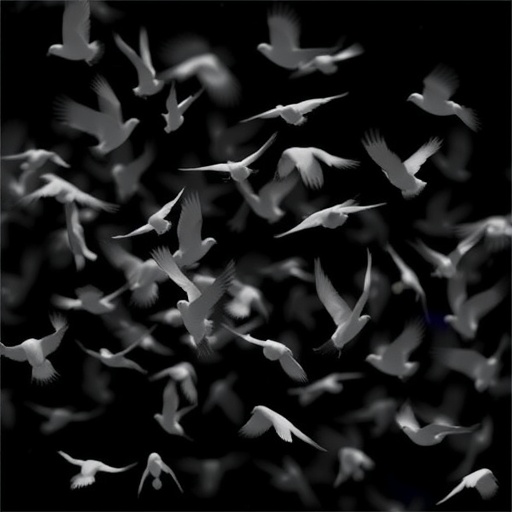The synchronized movements of flocking animals—hundreds of birds cutting fluid arcs through the sky or schools of fish weaving intricate patterns beneath the waves—have long captivated scientists and laypeople alike. How these collective behaviors emerge has been a central puzzle in biology and neuroscience for decades. Traditional theories posited that individuals follow a set of behavioral “rules of thumb” such as aligning with neighbors, maintaining proximity, and collision avoidance. However, a groundbreaking new study by Mohammad Salahshour and Iain Couzin from the University of Konstanz and the Max Planck Institute of Animal Behavior introduces a paradigm shift. Their research reveals that flocking behavior naturally arises from a fundamental neural architecture shared across species: the ring attractor network, embedding collective coordination within the very navigation systems of the brain.
At the heart of this novel theoretical framework lies the concept of the ring attractor network—a circular neuronal circuit that continuously encodes directional information. This structure enables individual animals to track their surroundings relative to fixed environmental cues, creating an allocentric representation of space. Unlike the egocentric view, which orients navigation around an animal’s body axis, the allocentric perspective situates others and obstacles according to stable landmarks in the world. Salahshour and Couzin demonstrate that when many such individuals’ neural activity becomes coupled via perception, their ring attractor dynamics synchronize, spontaneously producing large-scale alignment and coordinated group movement without the need for explicit behavioral directives.
This approach challenges the long dominance of alignment rules conceptualized in classical flocking models developed since the 1970s. While agent-based simulations using simple rules have replicated broad flocking patterns, they fall short in capturing how real animals sense and process spatial information cognitively. The allocentric flocking framework bridges this gap by grounding collective motion within the neurobiological processes of spatial representation. It elucidates how individual brains form a shared cognitive map of the environment, allowing synchronization of navigational signals that scale up into collective intelligence.
But the elegance of the ring attractor mechanism extends beyond mere collective alignment. It offers a flexible neural substrate capable of generating diverse group-level behaviors, from sudden expansions and dispersals to smoothly coordinated turns. The model’s predictions align well with empirical observations in schooling fish and swarming locusts, where rapid, context-sensitive transformations in group structure emerge naturally. This flexibility underscores the hypothesis that complex collective phenomena do not require complex behavioral programs—rather, they can emerge from simple but richly dynamic neural computations embedded within each agent.
Crucially, the framework also highlights the brain’s ability to switch dynamically between allocentric and egocentric spatial representations to optimize collective coordination. The allocentric ring attractor enables global orientation around stable world features, fostering widespread alignment across the group. In contrast, egocentric neural coding centers navigation relative to the animal’s own heading, enhancing responsiveness to immediate neighbors and collision avoidance. Simulations show that alternation between these representations stabilizes group movement and promotes adaptability in complex environments, reflecting how animals seamlessly integrate multiple neural frames of reference in real-time.
This dual-system architecture reveals a fundamental principle: animals do not rely solely on fixed heuristics. Instead, they utilize a built-in neural mechanism that fluently reshapes navigation based on situational demands. Couzin emphasizes, “The brain doesn’t select just one system but orchestrates both allocentric and egocentric codes to manage the dynamics of collective motion.” This insight unveils previously unappreciated neural underpinnings of social coordination and suggests that collective intelligence is deeply rooted in cognitive and neurobiological adaptability.
The implications of these findings extend far beyond biology. Since ring attractor networks are a conserved neural motif across many animal taxa, this mechanism likely evolved early and facilitated the emergence of social behaviors from solitary ancestors. The research thus contributes to our understanding of social evolution, proposing that complex group-level phenomena need not depend on specialized specialized neuronal circuits but arise from universal brain architectures already present in individual animals.
Moreover, the study offers exciting directions for engineered systems, particularly in swarm robotics. Current multi-robot coordination often depends on centralized control or external positioning systems like GPS. By drawing inspiration from the ring attractor’s navigational logic, robots could autonomously coordinate using local perceptions anchored to environmental landmarks, enhancing robustness and flexibility in GPS-denied settings. This bio-inspired approach could enable dynamic, decentralized swarm intelligence mimicking natural collective behaviors with minimal computational overhead.
Beyond robotics, the framework’s adaptability also allows integration with learning mechanisms, collective sensing, and decision-making processes that extend the scope of collective intelligence models. It signals a shift from viewing flocking solely as behavioral outcome toward understanding it as an emergent cognitive phenomenon—a natural product of interacting minds that share a common spatial representation. This perspective invites interdisciplinary research uniting neuroscience, ethology, computational theory, and artificial intelligence.
In summary, the allocentric flocking model developed by Salahshour and Couzin upends conventional views by rooting coordinated animal motion within fundamental neurobiological navigation systems. By demonstrating that the synchronization of ring attractor networks across individuals generates spontaneous collective behavior, their work closes the explanatory gap between neural computation and emergent group dynamics. This innovative framework reshapes our conceptualization of how order arises from interaction, bridging biological cognition with the possibilities of artificial collective systems in a profoundly impactful manner.
Subject of Research: Collective animal behavior; neural mechanisms of flock coordination
Article Title: Allocentric Flocking
News Publication Date: 2025
Web References: http://dx.doi.org/10.1038/s41467-025-64676-5
References: Mohammad Salahshour, Iain D. Couzin (2025) Allocentric Flocking. Nature Communications. DOI: 10.1038/s41467-025-64676-5
Image Credits: Christian Ziegler




